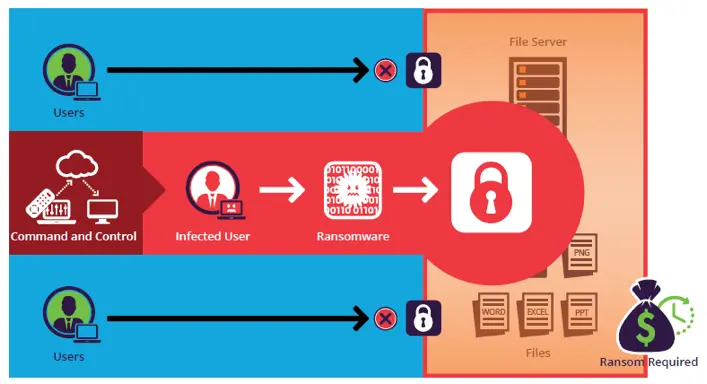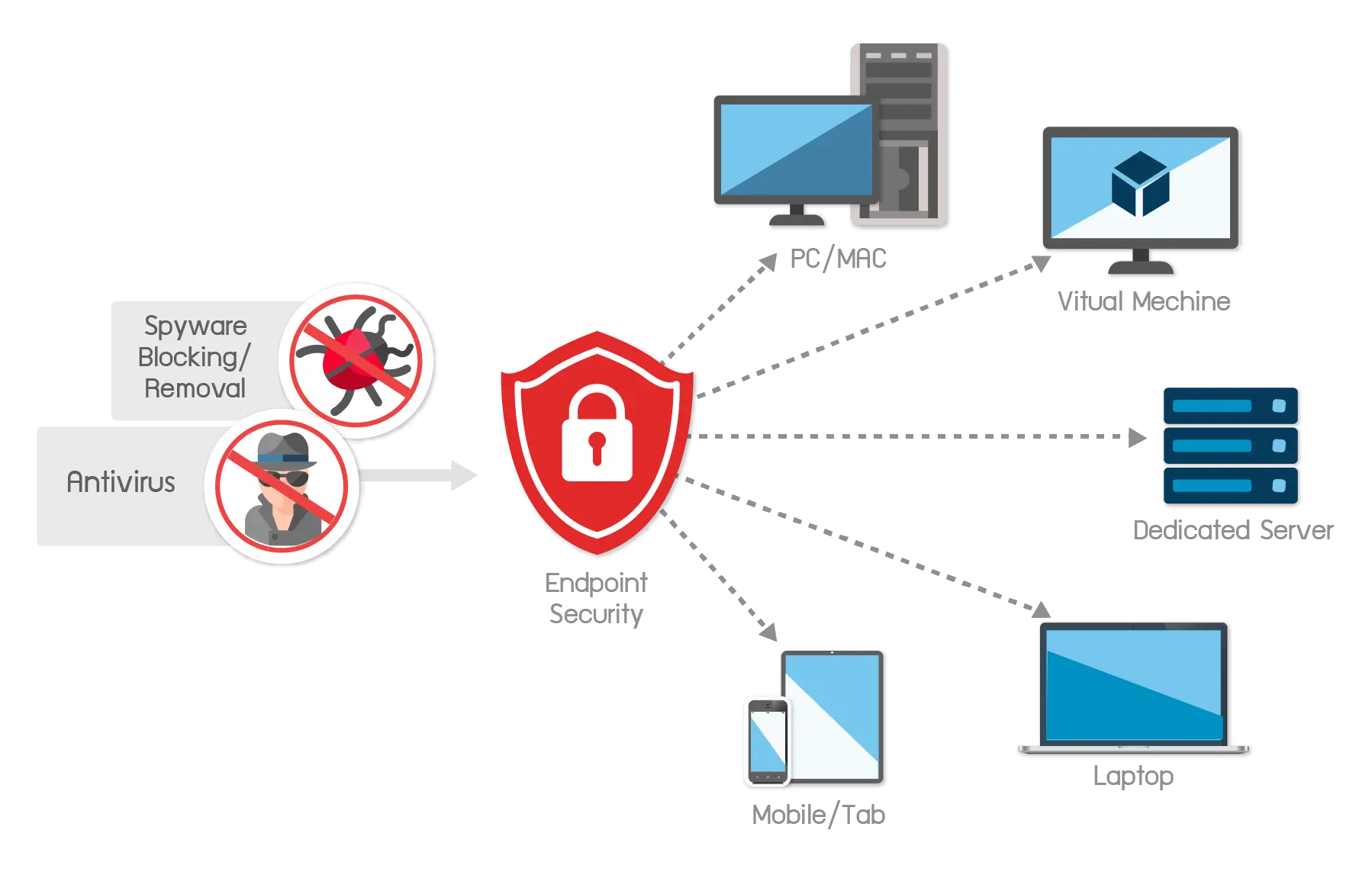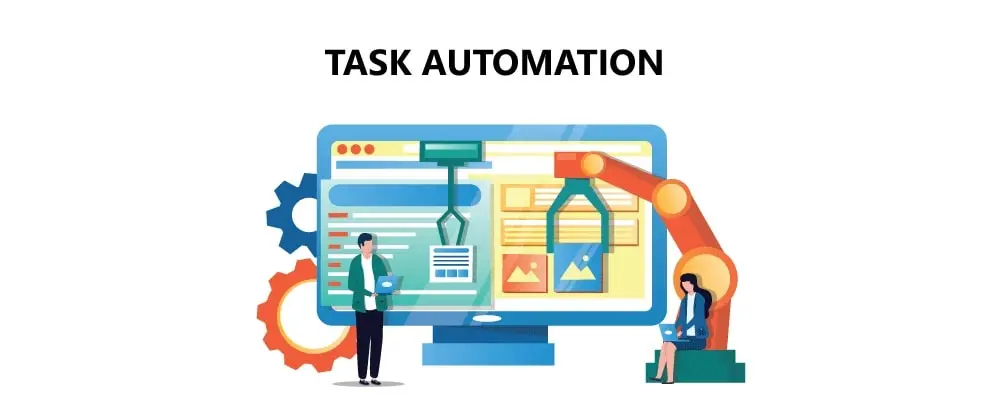Blog
Stay Tuned and
Plugged In
Automation vs. Human Expertise: Finding the Right Balance in AI Cybersecurity

It is safe to state that companies are having a tough time keeping up with cybercriminals nowadays as their methods are constantly changing, and the number of attacks is increasing. For instance, this can be seen as a surge in IoT malware activity recorded in 2020. What’s more, there are more potential entry points for bad actors, like negligent providers or discontented employees. Malware, ransomware, data exfiltration, phishing, and denial of service are a few of the many methods attackers use to wreak havoc on businesses and consumers. A recent report reveals that an average cost of a data breach reached $4.24 million. This data shows that companies need to leave legacy approaches behind to deal with cyber threats and learn new ways to stay safe and ahead of the curve. Now, increasingly capable robots and artificial intelligence (AI) systems have taken the lead. These systems, with automation, have taken on tasks that were formerly the only domain of human beings. But this leaves employers with some important questions to answer: how do we maintain the right balance between automation and human expertise in AI cybersecurity? To help them find the answer to this question, we have covered some tips and best practices that can help with this. But before anything else, let’s cover some important cybersecurity areas first where artificial intelligence offers incredible benefits.
Artificial Intelligence (AI) for Cybersecurity:- Artificial intelligence has a crucial part to play in cybersecurity as it is immensely useful in keeping up with the threat landscape and the level of cyber-attacks taking place across the globe. Machine learning, together with artificial intelligence, is used to help organizations keep up with the evolving landscape, automate threat detection, offer useful insights to cybersecurity experts, and give more effective responses than typical software-based or manual cybersecurity methods. Here are some of the major applications of artificial intelligence that highlight its significance in the cybersecurity industry:
Knowledge Consolidation :- Almost all online systems are vulnerable to cybersecurity threats, and preventing them demands the implementation of and adherence to several security protocols and standards. Machine learning security systems are capable of retaining information from decades-old data and utilizing consolidated knowledge to identify security breaches. A good example of consolidated learning is the IBM Watson platform. The security teams of IBM have repeatedly promoted Watson for state-of-the-art cybersecurity solutions. Its threat-sensing model holds training on unlimited data points. Also, the cognitive learning power merges human and computer intelligence for detecting threats and minimizing security incidents.
A Focus on Seamless Digital Experiences :- Leading organizations have a huge IT asset inventory, so it can get difficult to analyze all components for security breach risks. AI-based systems can identify the components more susceptible to a breach and predict the expected attack types so that companies can plan for tool and resource allocation toward weak areas. There are cognitive learning-dependent models that track security points for authorized access. These models can identify remote hacks beforehand, notify users, and form extra security layers to prevent possible data breaches. Valuable insights on hacks and breaches enable organizations to allocate applications and resources more effectively to make preparations for upcoming attacks and build significant cyber resilience.
Malware & Phishing Detection :- Malware is a program transferred designed to harm a device, network, or server intentionally. Some common malware activities include malicious advertising, data encryption, data deletion, accessing and controlling devices remotely, tracking user activity, and so on.
Ransomware Attacks:- Malware is seen as a ransomware attack if the attacker intends to take a ransom amount in return for the system or file access to the owner. While advanced applications efficiently detect common ransomware or malware attacks, it may get challenging to filter out dynamically changing malicious agents. AI-driven cybersecurity systems are designed to detect malicious patterns more effectively. According to the director of cybersecurity advocacy at Deep Instinct, Chuck Everette, the standard signature-based malware detection systems prevent up to 60% of threats effectively, whereas AI-powered systems guarantee a security efficiency rate of over 90%. Artificial intelligence researchers and security professionals employ many different techniques. One example is the research carried out at Plymouth University, where malware detection was handled using computer vision. They used binary visualization analysis for converting files into colored picture representations displaying color distinction for malicious files.The use of neural networks is another example to be covered. The researchers achieved a complete malware detection accuracy of over 70% on every file format, with up to 94% accuracy for .pdf and .doc files.
Phishing Attacks:- Attackers also deploy and activate malware through phishing attacks. Phishing is a fraudulent practice wherein attackers trick people into revealing sensitive information through deceptive emails or websites.AI-driven systems can detect if a site or email is a phishing trap. These systems can also analyze malware based on its inherent characteristics; for example, if a solution is designed to encrypt or remove files without authorization, it is probably a threat. A phishing detection method proposed by researchers from the University of North Dakota and based on machine learning analyzes the structure of emails and categorizes them as legitimate or illegitimate emails successfully. Another instance of an AI-powered phishing detection solution is Mimecasts’s CyberGraph. This tool employs machine learning to prevent impersonation or phishing attacks. It has three main functionalities:
- Discerning patterns with the help of identity graphs to detect phishing emails
- Notifying users with colored warning banners that indicate the threat level
- Stopping trackers in emails capable of revealing sensitive information
Detection of New Threats:- The increasing complexity of software architectures also increases the possibility of new vulnerabilities and threats. According to Statista, in 2022, internet users across the world discovered more than 25,000 new common security vulnerabilities and exposures, the highest reported figure to date.Typical software solutions cannot keep pace with lots of new malware created frequently, so this is where artificial intelligence can really help with. AI models incessantly update with data on recent vulnerabilities and threats, which helps with defense against new threat actors and prevent any attacks. With the use of advanced algorithms, AI detects cyber threats and malicious activities. These systems spot malware, run pattern recognition, and highlight even the slightest patterns of ransomware or malware attacks before it gets into the system. AI allows for predictive analysis that cybersecurity experts can retrieve from a system. The system uses natural language processing which curates data by scraping through research studies, articles, and news on cyber attacks, anomalies, and prevention strategies. In addition, these systems provide the latest knowledge of global and market-specific dangers to formulate major prioritization decisions. Keeping the success of AI in cybersecurity in focus, many tech giants, including IBM, Microsoft, and Google, developed sophisticated AI systems for threat detection and control. Google’s Project Zero team identifies and fixes web vulnerabilities to make the digital space safer. Additionally, Google Play Protect scans billions of applications on a regular basis for malware and other cyber threats. What’s more, the Cyber Signals program by Microsoft uses AI to analyze trillions of security signals and hacker groups to spot malicious activity and application-related weaknesses. Microsoft reports that this program blocked more than 35.7 billion phishing attacks and 25.6 billion identity theft tries on company accounts.

Endpoint Protection:- More and more devices are getting used to working remotely, making endpoint protection highly important for any company seeking to protect its assets from a distance. Antivirus software and VPNs can be useful against remote ransomware and malware attacks. A VPN is a service used to create a secure connection between a client and a network. Some of the best VPNs, like NordVPN and ExpressVPN , are used to add security and anonymity to users while they connect to web-based services and sites.However, they also work based on signatures. This can be a concern because if a new type of malware attack occurs, signature protection may be unable to provide protection against it. AI-based endpoint protection handles it differently by establishing a behavior baseline for the endpoint via a repeated training process. AI flags anything that is abnormal and takes action, like notifying a technician or reverting to a safe state after a ransomware attack.
Bot Blocking:- Bots consume a massive proportion of web traffic these days, and without the help of AI, keeping up with the sheer volume of bots can get quite difficult. Manual handling alone cannot keep up with the number of bots, as they can pose serious threats to businesses if they go undetected.AI should be used to help identify the bots' legitimacy and discern the good bots, such as search engine crawlers, from bad ones. It enables cybersecurity teams to perform analysis on large amounts of data and understand behavioral patterns when it comes to the manner a user generally navigates a website. Anomalous behavior can be detected at once, enabling experts to assess user journeys and stay ahead of malicious bots.
Striking a balance between Automation and Human Skills:- The plus points of artificial intelligence are fully clear, but there are concerns about expertise being lost if maximum tasks are automated. Earlier, people gained expertise by spending hours performing complex tasks while working their way up.Automating the processes has some incredible benefits, saving time that can be spent otherwise doing something of value. But how is it possible to automate AI cybersecurity operations without affecting the development of the existing workforce?A balance between automation and human expertise is essential and key to productivity. Below are a few tips to help you maintain this vital balance:

Pick the Tasks to be Automated:- The primary step is to identify which tasks can be automated and which ones need human intervention. Any task that is time-consuming and unengaging and requires no creativity, high-order thinking, or decision-making is a good candidate for automation. If a task needs to be performed at the same time or interval and includes the same sequence of steps, then it could be automated.However, automation cannot fully replace human intervention. AI should not be left to function independently without human oversight since machines are basically machines, and they do not have any moral or social compasses. Training should be given to AI across disparate data sets, and human checks have to be in place to maintain the delicate balance.For example, AIs can now read, write, speak, and understand feelings. They also have the potential to automate other types of tasks, such as scanning security videos for suspicious behavior, moderating content online, responding to simple customer inquiries, inputting data, and maintaining records. However, planning or offering personalized advice demands human expertise.
Upskill and Reskill Workforce:- In these times, the higher chances of routine tasks getting automated have led to concerns about job displacement and the increase of the skills gap. This situation demands companies to provide training and certification opportunities to create a future-ready workforce.Employees should learn new skills and receive thorough training in data analysis, programming, machine learning, digital literacy, and cybersecurity to become capable of working alongside automated systems. They should be offered support and advice through mentoring and workshops, in addition to these development opportunities ensuring that employees are confident in using the new technologies for handling cybersecurity issues.
Increase Employee Involvement in the Implementation Process:- In today’s super-competitive business world, employee involvement plays a major role. It is said that an enterprise’s success or failure usually depends on its employees.So, companies should involve employees in the planning and implementation of AI systems for cybersecurity. In addition, they should solicit their feedback and ideas to improve the overall process. Employees can partake in planning and continuous improvement by contributing their skills and ideas. In all, increasing the involvement of employees in the implementation process can boost productivity, limit resistance to change, and build buy-in from the start.
Focus on High-value Tasks:- With AI and automation, employees can get lots of time on hand that can be utilized to focus on more complex and high-level tasks demanding human judgment and creativity. These tasks help companies move closer to accomplishing their business objectives. Companies should understand the value of their time and where they decide to focus their efforts so that they can make measurable progress toward getting the actual work done. They should restructure duties to ensure employees are spending all their time on tasks that add strategic value and benefit employee development and growth.
Prioritize Customer Experience:- Automation can make processes more efficient and faster and save the company time and money, but it should not come at the cost of customer experience. When using automated phone systems and chatbots, customers prefer human support as they don't like speaking to robots at all times. A recent survey found that nearly 70% of consumers said they would rather communicate with a human customer service representative than a digital service representative or chatbot. So, automation should not cause consumer frustration when they seek human connection. Customers will trust people more than technology. The more company show them empathy and find ways of connecting with them, the more benefit they have. Therefore, it is important to ensure that automation is designed to improve customer experience and not hinder it.
Track and Evaluate:- Focus on keeping track of automated processes to ensure they work effectively and analyze the customer response to improve where needed. Evaluate the balance between automation and human skills and make adjustments as required.
Final Thoughts:- The benefits of artificial intelligence in cybersecurity exceed the areas mentioned earlier, and in 2023 and beyond, artificial intelligence will become a crucial and essential element in cybersecurity systems across the world. The better approach is to adopt robust automation systems for AI cybersecurity as they can transform a business and how the employees work. But we must stay mindful of its influence on employee development, as the human element will always remain the most valuable asset. Therefore, the key takeaway here is that employers must pick the tasks that are better suited for machines so that they can be automated, leaving human beings to perform more creative and rewarding tasks. Plus, companies must equip their employees with the skills important for success in the 21st century.
